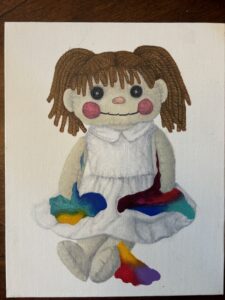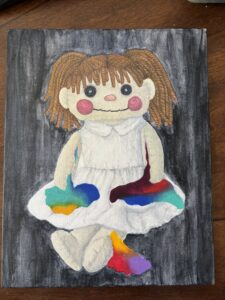The Not-So-Formula of Art Therapy
Hello readers! It’s officially time for my weekly update!
I started off my week by watching a documentary called Art Therapy: The Movie. It explores the different ways art therapy can be beneficial, from treating people with addictions in New York City to helping individuals with trauma following the Tohoku Earthquake in Japan. One example in particular really helped me understand the function of art therapy as an expression of the emotions that may be difficult to articulate in words.
A patient at a cancer center in New York City described how words like “it’s scary” or “I’m terrified” don’t come close to encapsulating the emotions she’s feeling. However, with art therapy, she was able to create a collage showing a person jumping into an abyss with no net representing her emotions more accurately.
The documentary also discussed the difficulties that come with art therapy. Some people may correlate art therapy with playing or describe it as “kindergartener’s work,” leading to some clients having insecurities about their artwork. This led to a conversation with my mentor about the challenges and limitations of art therapy.
She mentioned how Western healthcare research can be a double-edged sword. Research for Western healthcare usually emphasizes the medical model which focuses on symptom reduction and making the treatment replicable and methodical. While this may be beneficial in making health care safe and predictable, treating mental health is not as formulaic, especially art therapy. Art therapy is difficult to quantify and the results vary between each individual, so research for it doesn’t receive as many grants or funding.
As my mentor and I discussed these challenges, my mind wandered back to the novel Ceremony that our class read last year. The Western medical practice was unsuccessful as it focused on treating Tayo’s physical symptoms rather than the underlying cause of his trauma. The ceremony allowed Tayo to heal as it focused on him regaining his identity in the world he lives in, the underlying cause of his trauma. This discussion with my mentor was truly eye-opening and I now have a new perspective on society around me and the novel I previously read!
I was also able to finish the base colors for my painting! I’ve attached pictures below again this week to show my progress and what colors I used. I still need to clean up the paint for the background and add some dimension to the color flowing out of the doll. I also might adjust some of the colors, as I’m still not fully satisfied with them. I hope to find that balance between contrasting with the darkness of the background and not making it look too cheerful. I can’t wait to start adding more detail to really help this painting come to life!





Comments:
All viewpoints are welcome but profane, threatening, disrespectful, or harassing comments will not be tolerated and are subject to moderation up to, and including, full deletion.